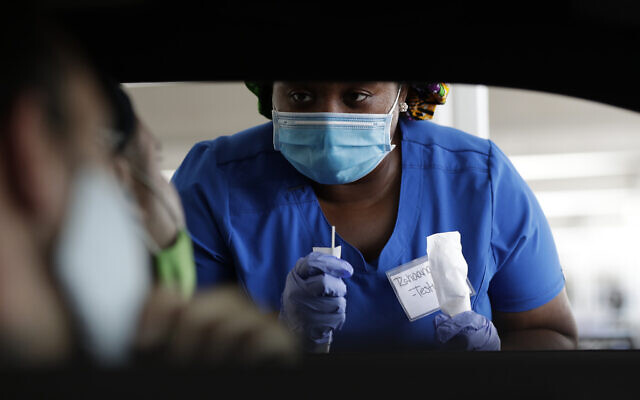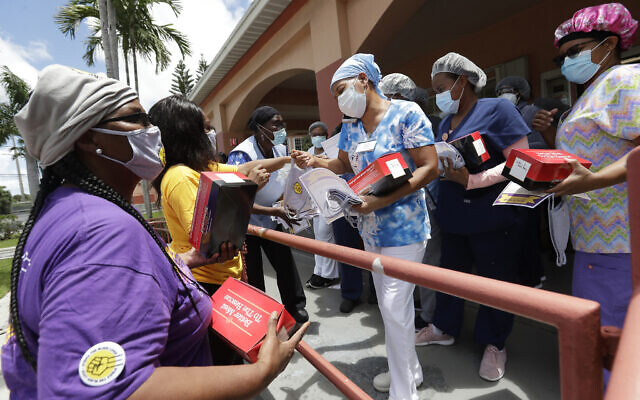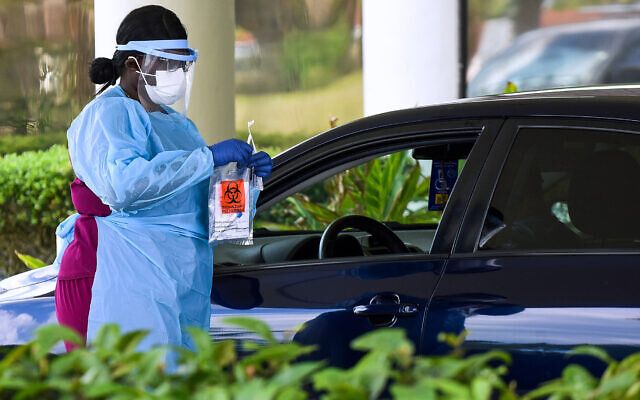New study shows even those with mild case are unwell for 2-3 weeks, including those with no pre-existing conditions

At least 35 percent of patients with milder cases of COVID-19 experience symptoms for several weeks after testing positive for the disease and don’t quickly return to their usual good health, including those without chronic medical conditions, according to a new study by the US Centers for Disease Control and Prevention (CDC).
In adults hospitalized with severe cases of the disease, “prolonged symptom duration and disability are common,” wrote the authors of the CDC report published on Friday, but COVID-19 can also “result in prolonged illness even among persons with milder outpatient illness, including young adults.”
The CDC study surveyed 292 respondents across 13 states who had tested positive for the coronavirus, a majority (274 or 94%) of whom were experiencing one or more symptoms at the time of the test. The surveys were conducted by phone between April and June. Follow up interviews were conducted 14–21 days after the respondents’ test date. Close to 100 respondents, or 35%, reported not having returned to their usual state of health, including 26% among those aged 18–34 years, 32% among those aged 35–49 years, and 47% among those aged 50 and over. Among respondents who reported coughing, fatigue, or shortness of breath at the time of testing, “43%, 35%, and 29%, respectively, continued to experience these symptoms at the time of the interview,” the CDC authors noted.
Among the symptomatic patients, the median number of symptoms was seven with fatigue (71%), cough (61%), and headache (61%) those most commonly reported, according to the survey.
“Characterizing return to baseline health among outpatients with milder COVID-19 illness is important for understanding the full spectrum of COVID-19–associated illness and tailoring public health messaging, interventions, and policy,” the authors said.
The report noted that “whereas previous studies have found race/ethnicity to be a risk factor for severe COVID-19 illness, this study of patients whose illness was diagnosed in an outpatient setting did not find an association between race/ethnicity and return to usual health although the modest number of respondents might have limited our ability to detect associations.”
In the United States, the disease has disproportionately affected minority communities, including African-Americans, Hispanics, and Native Americans, who are hospitalized and killed by the coronavirus at far higher rates than others.

Federal public health officials have released a new strategy that vows to improve data collection and take steps to address stark inequalities in how the disease is affecting Americans.
Officials at the CDC stress that the disproportionately high impact on certain minority groups is not driven by genetics. Rather, it’s social conditions that make people of color more likely to be exposed to the virus and — if they catch it — more likely to get seriously ill.
“To just name racial and ethnic groups without contextualizing what contributes to the risk has the potential to be stigmatizing and victimizing,” said the CDC’s Leandris Liburd, who two months ago was named chief health equity officer in the agency’s coronavirus response.
Outside experts agreed that there’s a lot of potential downside to labeling certain racial and ethnic groups as high risk.
“You have to be very careful that you don’t do it in such a way that you’re defining a whole class of people as ‘COVID carriers.’” said Dr. Georges Benjamin, executive director of the American Public Health Association.
COVID-19’s unequal impact has been striking:
— American Indians and Native Alaskans are hospitalized at rates more than five times that of white people. The hospitalization rate for Black and Hispanic Americans is more than four times higher than for whites, according to CDC data through mid-July.
— Detailed tracking through mid-May suggested Black people accounted for 25% of US deaths as of that time, even though they are about 13% of the US population. About 24% of deaths were Hispanics, who account for about 18.5% of the population. And 35% were white people, who are 60% of the population.
Other researchers have pointed out problems for minorities as they try to access coronavirus tests or health care.
But while sometimes highlighting the disproportionate toll the virus has had on certain racial and ethnic groups, the CDC is being careful not to categorize them as high risk or meriting higher priority for certain health services.
Indeed, in May, the CDC took down guidelines it had posted that said minorities without symptoms should be among those prioritized for coronavirus testing. Government officials later said the posting had been a mistake.

Last month, the CDC revised its list of which Americans are at higher risk for severe COVID-19 illness, adding pregnant women and people with certain underlying conditions. Race and ethnicity were left out.
On Friday, the CDC issued a racial equity strategy document vowing better data collection on how the virus is impacting minorities. It also calls for improvements in testing, contact tracing, and safely quarantining, isolating and treating minorities at risk. The agency also said it will take steps to diversify the public health workforce responding to the epidemic.
The agency did not immediately provide details about any added funding for this work. But it’s more than has been done by the agency in the past, some health experts said.
Dr. Richard Besser, chief executive of the Robert Wood Johnson Foundation, previously spent 13 years at CDC. He ran the agency’s emergency preparedness response for four years and was acting director when a pandemic flu hit the U.S. in 2009.
“I can tell you that we spent very little time on talking about who was able to follow our recommendations and who was not,” he said.
He sees many public health recommendations that “seem to have been created without any recognition of the conditions in which millions and millions of Americans live.”
People who are required to go to work to stock grocery store shelves or drive buses don’t have the luxury of working at home. They also may not have a place to stay, away from others, if directed to go into quarantine or isolation. And many are minorities, experts said.
Dr. Michelle LaRue sees that. A senior manager at an organization called CASA that helps Latinos and immigrants in Maryland, Virginia and Pennsylvania, she said lack of paid sick leave in industries in which many Latinos work, such as construction, forces people to pick between “feeding their families or staying home to self-isolate.” And multi-generational and multi-family housing settings are often people’s only choice.
The CDC appointed Liburd, an agency veteran, in May to better address such issues — the first time the agency had created that kind of leadership role for an epidemic. The goal was to make her a central figure in the agency’s coronavirus work, with input on research and other tasks.
Data collection will be key.
When doctors order coronavirus tests for patients, standard forms ask for important patient information, said Janet Hamilton, executive director of the Atlanta-based Council of State and Territorial Epidemiologists.
But physicians often don’t ask. Race and ethnicity data is missing 80% to 85% of the time, and patient address and phone number is missing as much as 50% of the time, Hamilton said.
Advocates have pushed for improvements for years, she said, “but it’s never been prioritized or incentivized.” Public health officials “find it painful — quite honestly — at how incomplete the data is,” she said.
David Holtgrave, dean of the School of Public Health at University at Albany, said he hoped CDC can help push progress in race and ethnicity data for testing, hospitalizations and deaths.
“Completeness of that data should be our goal,” Holtgrave said in an email.
As reported by The Times of Israel
